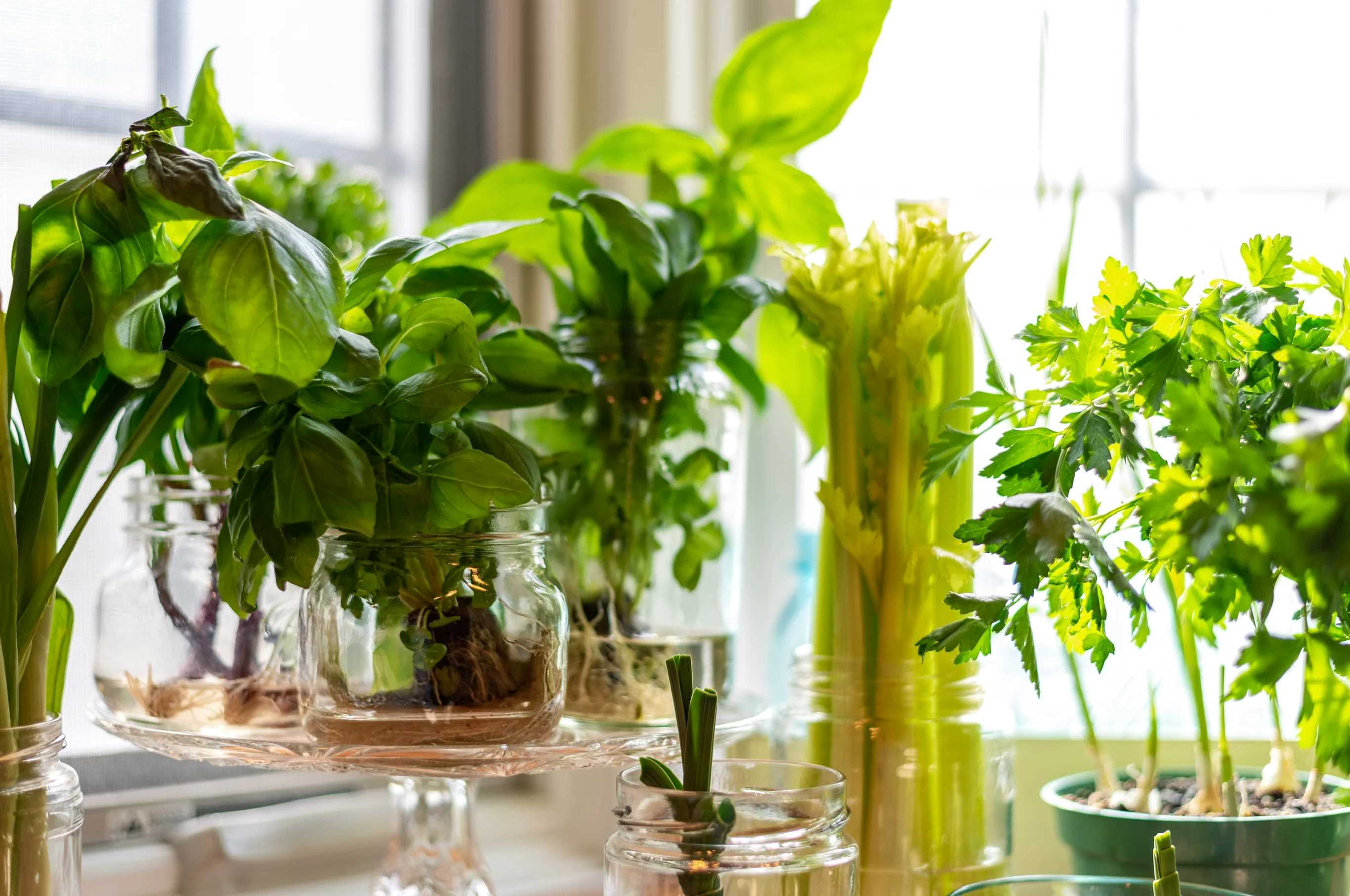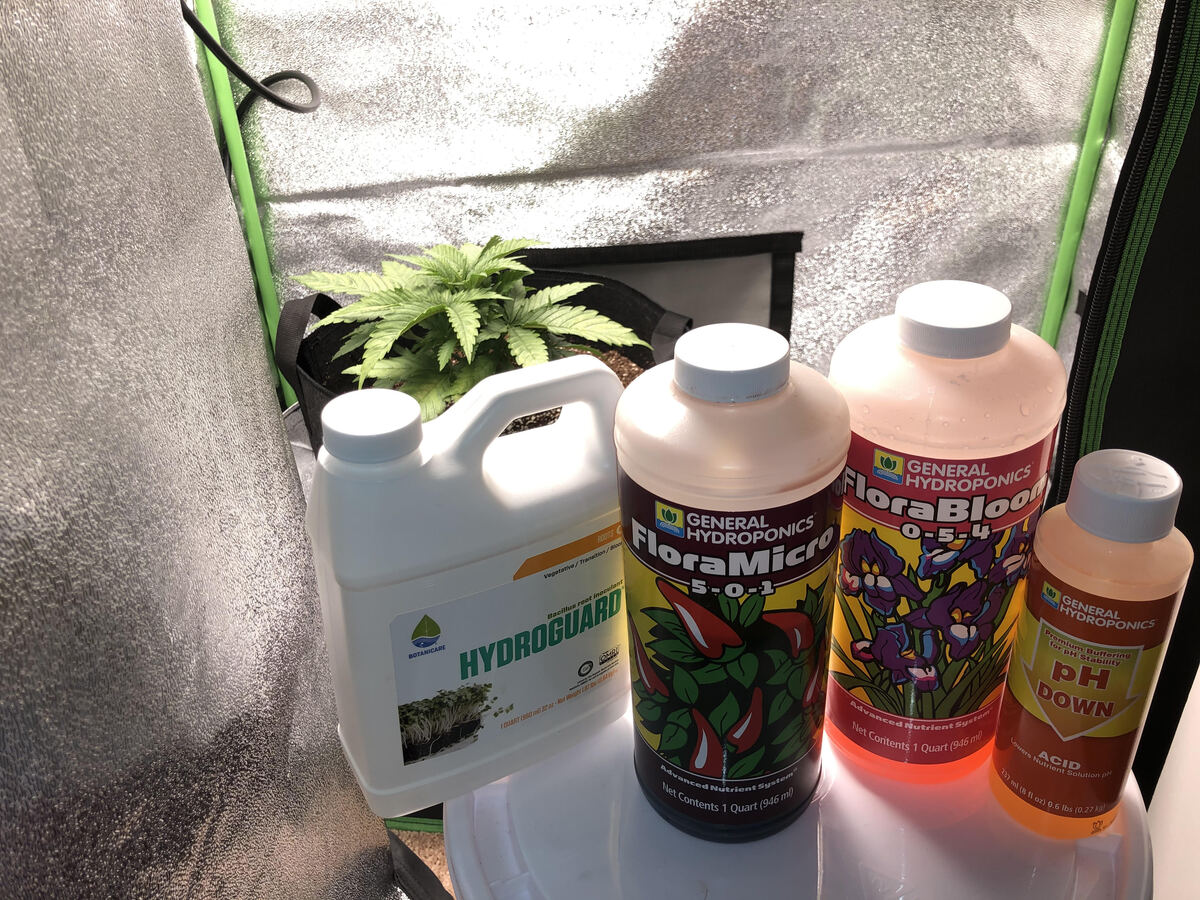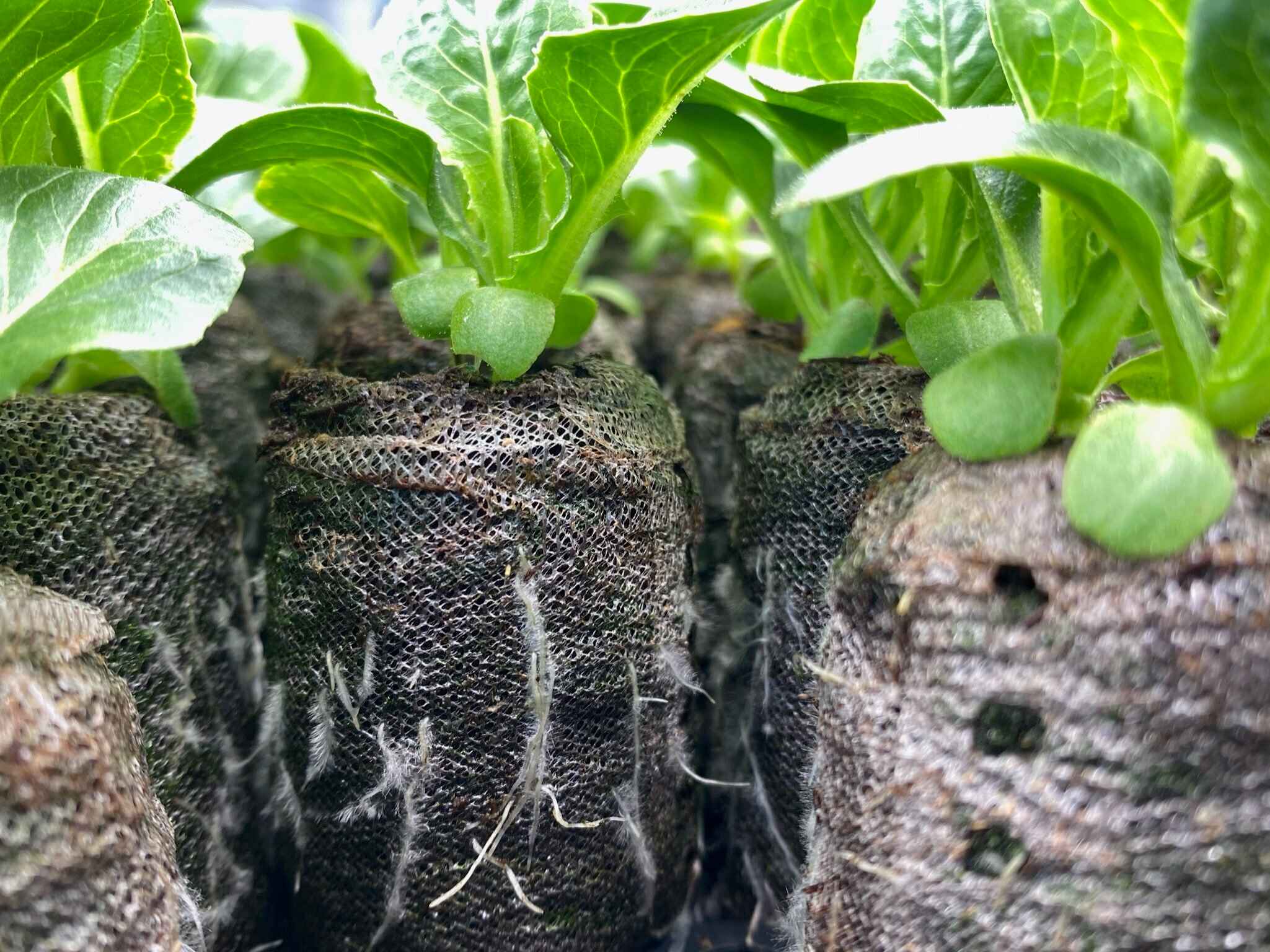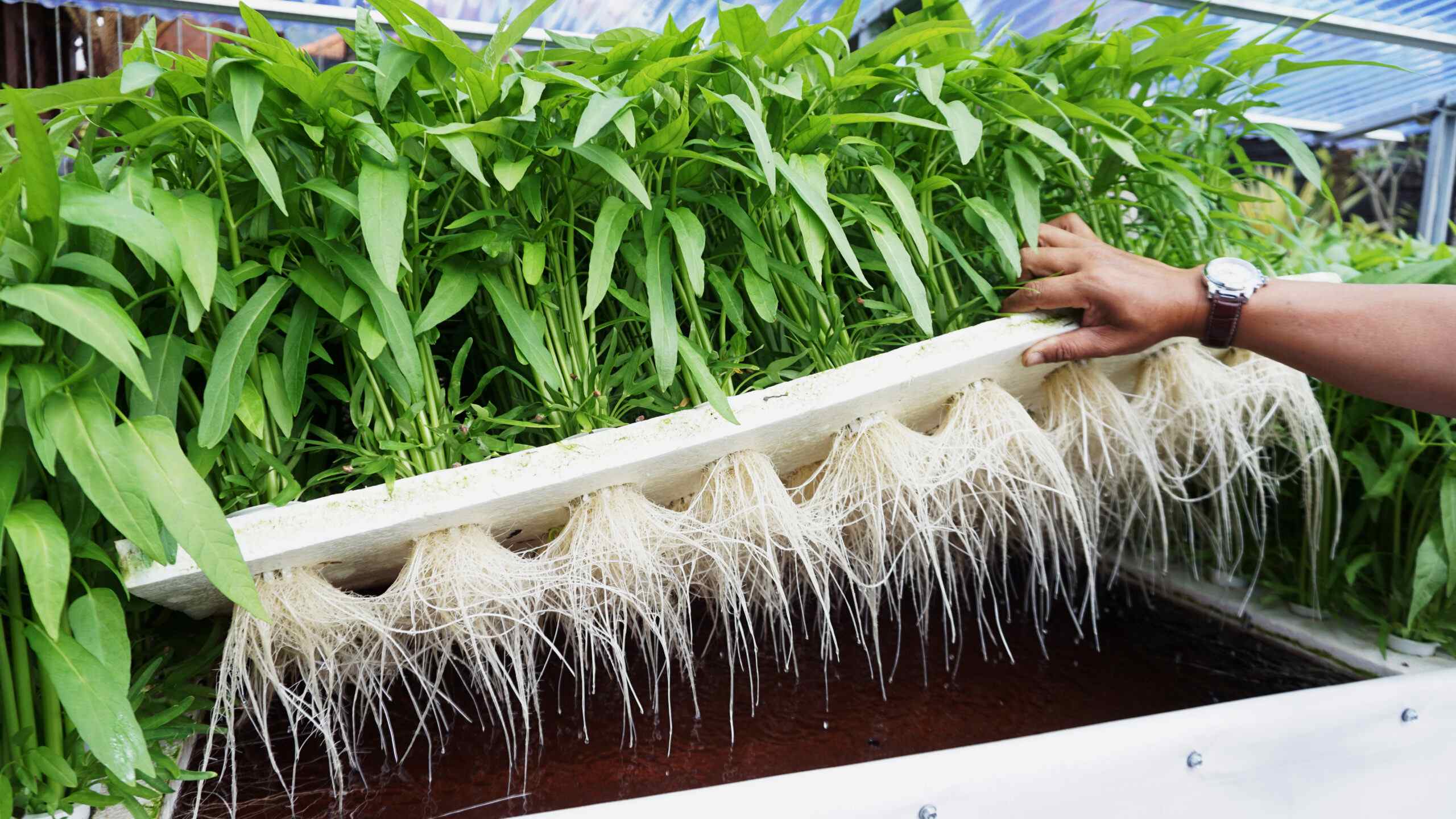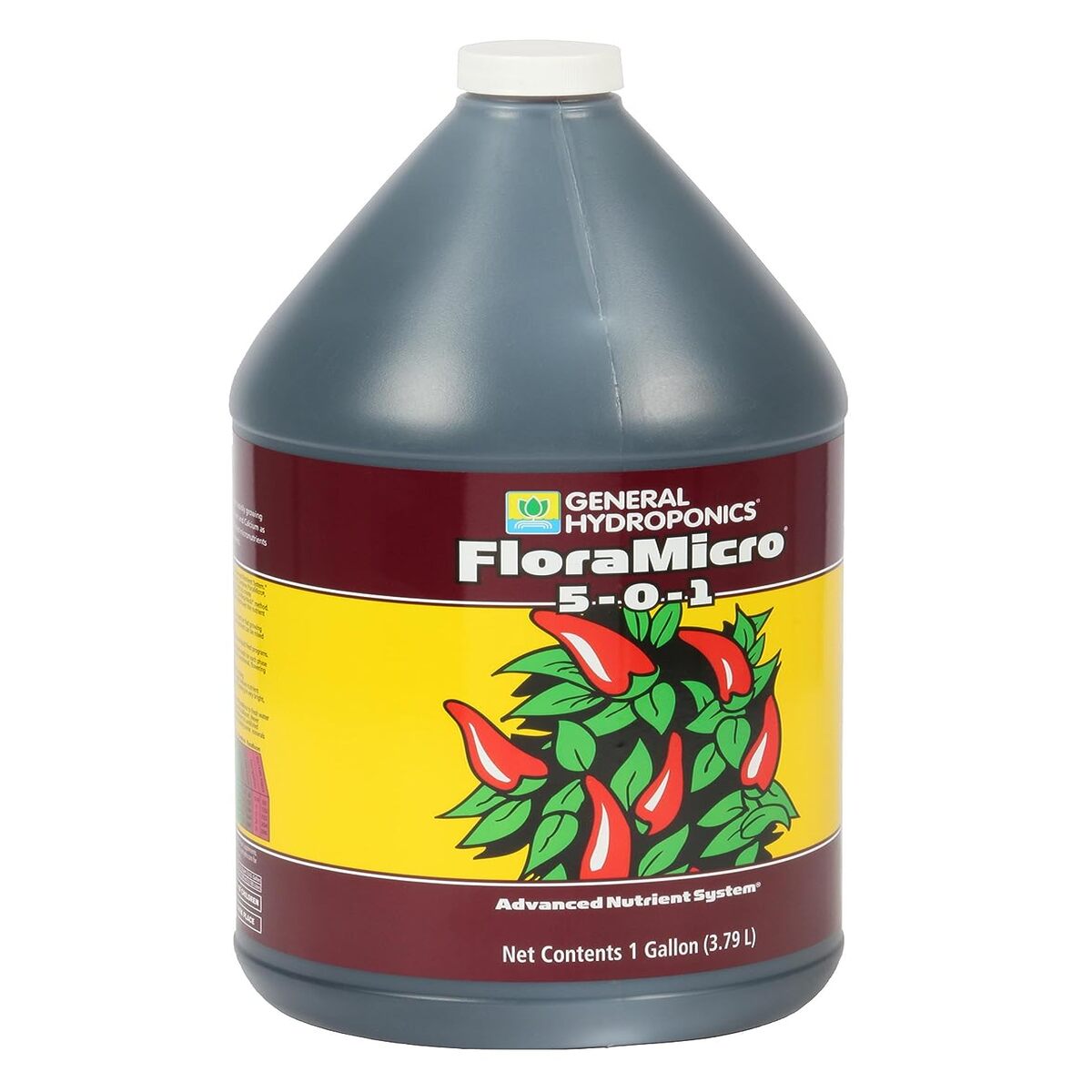Home>Gardening News and Trends>Latest News>What Are The Problems With Hydroponics
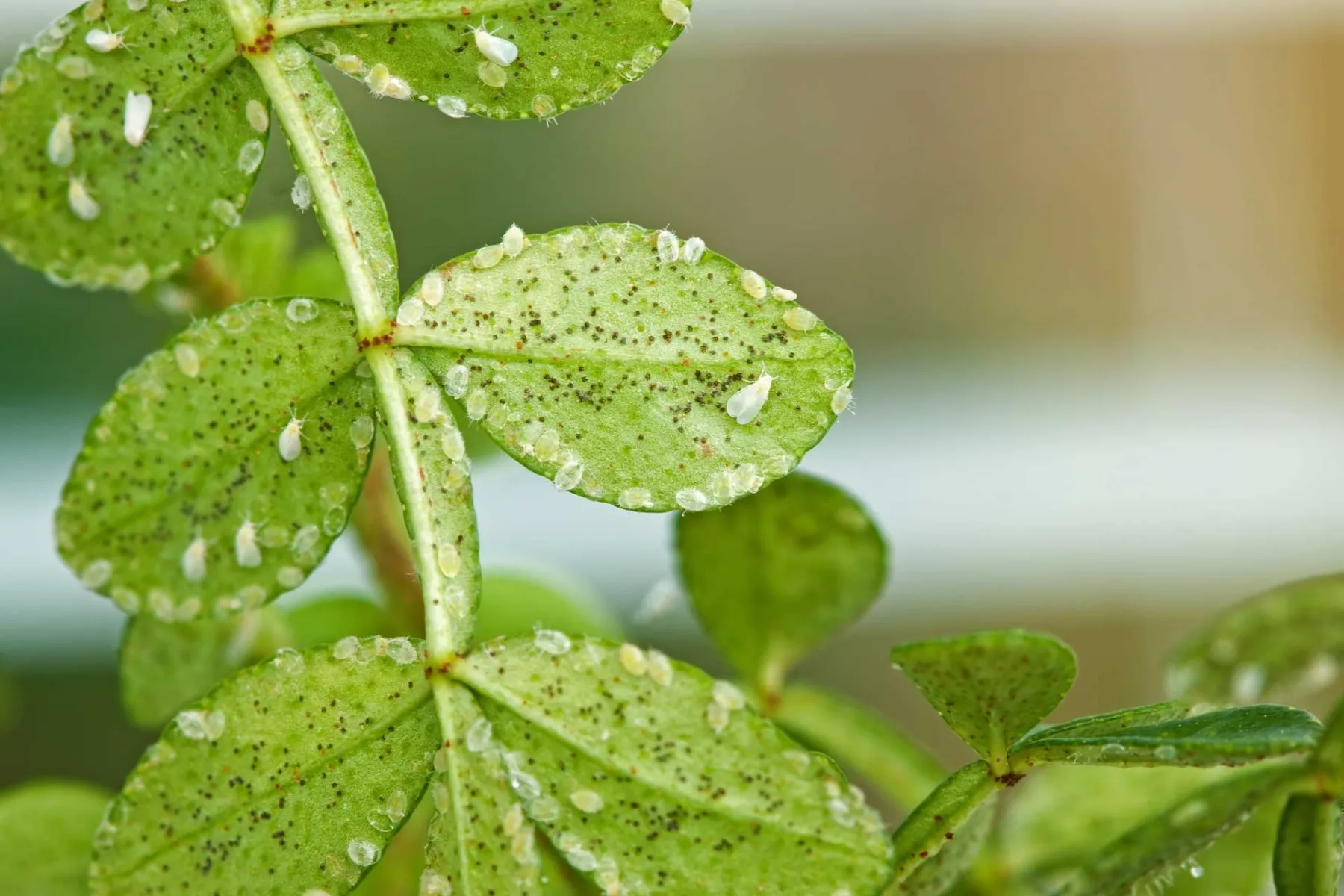

Latest News
What Are The Problems With Hydroponics
Modified: January 22, 2024
Discover the latest news on hydroponics and learn about the common problems that growers face. Get insights and solutions for a successful hydroponic setup.
(Many of the links in this article redirect to a specific reviewed product. Your purchase of these products through affiliate links helps to generate commission for Chicagolandgardening.com, at no extra cost. Learn more)
Table of Contents
Introduction
Hydroponics, a method of gardening that relies on nutrient-rich water instead of soil, has gained significant popularity in recent years. With its ability to produce high yields in limited space and minimize water usage, hydroponics offers a promising solution for sustainable agriculture.
However, despite its numerous benefits, hydroponics is not without its challenges. This article aims to explore some of the problems associated with hydroponics and shed light on the potential drawbacks that growers may encounter.
From issues related to nutritional diversity to the reliance on technology and the environmental impact, we will delve into the complexities of hydroponic systems and discuss the challenges that growers face in implementing and maintaining these systems.
It is important to note that while there are indeed challenges, hydroponics remains a valuable and innovative method of growing plants. By understanding the potential drawbacks, growers can make informed decisions and develop strategies to overcome these obstacles.
Let’s now explore some of the problems commonly associated with hydroponics and discuss potential solutions to mitigate these challenges.
Lack of Nutritional Diversity
One of the primary concerns with hydroponics is the potential lack of nutritional diversity for plants. Unlike traditional soil-based gardening, where plants can draw a wide range of minerals and nutrients from the soil, hydroponics relies on nutrient solutions specifically formulated for plant growth.
This targeted approach can be advantageous as it allows growers to precisely control the nutrient content and pH levels. However, it can also result in a limited range of nutrients available to plants, potentially leading to nutritional deficiencies.
Furthermore, hydroponic systems often focus on the production of a few key crops, such as lettuce, tomatoes, or herbs, leading to a lack of variety in the diet. This limited selection of crops means that consumers may not be able to enjoy the same nutritional diversity as they would from a traditional vegetable garden or local farmers market.
To address this issue, hydroponic growers can consider incorporating nutrient-rich supplements or using organic additives to boost the nutritional content of their plants. Additionally, expanding the range of crops grown in hydroponics and exploring lesser-known varieties can help increase the diversity of nutrients available to consumers.
Education and consumer awareness also play a crucial role in promoting the importance of a varied and balanced diet. By highlighting the nutritional benefits of different crops and encouraging consumers to explore local produce options, the limitations of hydroponics in terms of nutritional diversity can be mitigated.
Overall, while hydroponics may present challenges in terms of providing a diverse range of nutrients, growers and consumers can work together to find creative solutions that enhance the nutritional value of hydroponically grown plants and ensure a well-rounded diet.
Risk of System Failure
One of the inherent risks associated with hydroponics is the potential for system failure. Unlike traditional soil-based gardening, where plants have access to natural resources and backup systems in case of emergencies, hydroponic systems rely heavily on technology and infrastructure.
A power outage, pump failure, or malfunctioning sensors can all result in a disruption of the nutrient supply to the plants, leading to stunted growth or even crop loss. Additionally, the reliance on artificial lighting in indoor hydroponic setups increases the risk of light failures or fluctuations, further jeopardizing plant health and productivity.
To mitigate the risk of system failure, it is essential for hydroponic growers to implement backup systems and redundancy measures. This includes having spare pumps and sensors, setting up uninterruptible power supplies (UPS), and regularly monitoring and maintaining equipment to prevent unexpected failures.
Moreover, growers can implement integrated monitoring and control systems that provide real-time data on environmental conditions, allowing for early detection of potential problems and prompt intervention. By proactively addressing issues, growers can minimize the risk of system failures and ensure the continuous supply of nutrients to the plants.
Investing in quality equipment, ensuring proper insulation and ventilation, and having a backup power source are all critical components of a robust hydroponic system that can withstand unforeseen challenges. Additionally, regularly updating and upgrading technology and staying informed about the latest advancements in hydroponics can help minimize the risk of system failures.
By being prepared and proactive, hydroponic growers can mitigate the risks of system failures and ensure the stability and productivity of their operations, ultimately contributing to the long-term success of hydroponic farming.
High Initial Cost
One common challenge faced by growers interested in adopting hydroponics is the high initial cost associated with setting up a hydroponic system. Compared to traditional soil-based gardening methods, the upfront investment required for hydroponics can be significantly higher.
Hydroponic systems require specialized equipment such as grow lights, pumps, reservoirs, and pH monitors, all of which come with a price tag. Additionally, the construction of dedicated indoor facilities or the retrofitting of existing structures to create a controlled environment further adds to the cost.
However, it is important to understand that while the initial investment may be high, hydroponics offers long-term benefits and potential cost savings. Hydroponic systems typically yield higher crop yields in smaller spaces compared to traditional gardens, making them more efficient in terms of space utilization. The controlled environment also allows for year-round production, eliminating the dependence on seasonal availability of crops.
Furthermore, hydroponic systems require less water compared to soil-based methods, resulting in reduced water bills. The precise control over nutrient delivery and environmental conditions also minimizes the need for pesticides and fertilizers, potentially reducing input costs and the environmental impact.
To make hydroponics more accessible, various organizations and governments offer grants, subsidies, and financial assistance programs to support growers in adopting this innovative agriculture method. Additionally, growers can explore options for used equipment or consider starting on a smaller scale before expanding their operations.
By carefully planning and budgeting, growers can find cost-effective solutions for their hydroponic projects. Conducting thorough research, seeking advice from experts, and exploring different financing options are essential steps in minimizing the initial cost barrier.
While the high initial cost can be a deterrent for some growers, it is important to consider the long-term benefits that hydroponics offers. With careful planning and a strategic approach, the initial investment can be justified by the increased productivity, efficiency, and sustainability that hydroponic farming provides.
Dependency on Technology
One of the challenges faced by hydroponic growers is the heavy dependency on technology to ensure the success of their systems. Unlike traditional farming methods that rely on natural processes, hydroponics requires sophisticated equipment and precise control over environmental factors.
From automated nutrient dosing systems to climate control units and remote monitoring devices, hydroponic growers heavily rely on technology for maintaining optimal growing conditions. Any technological malfunction or disruption can have a significant impact on plant health and overall productivity.
This dependency on technology poses a risk of potential system failures, as mentioned earlier, but it also requires growers to have a comprehensive understanding of the equipment and the skills to troubleshoot any issues that may arise.
To reduce the risk of technology-related challenges, growers should invest in reliable and high-quality equipment. Regular maintenance and calibration of sensors, pumps, and other devices are crucial to ensure accurate readings and proper functioning.
Additionally, growers should stay up to date with advancements in hydroponic technology and software to take advantage of improved automation, remote monitoring, and data analysis capabilities. Utilizing user-friendly interfaces and intuitive software platforms can help simplify the management and control of hydroponic systems.
Another aspect to consider is the need for backup systems and redundancy in technology. Having spare equipment and backup power supplies can help minimize downtime in case of technological failures.
Moreover, growers can invest in training and education to acquire the necessary skills and knowledge for troubleshooting technological issues. Connecting with other hydroponic growers, joining forums or online communities, and attending industry events can provide valuable insights and support in handling technology-related challenges.
While the dependency on technology in hydroponics may seem daunting, it is important to note that technology also brings numerous benefits. The ability to precisely control environmental factors, monitor plant health, and automate nutrient delivery can lead to higher yields and increased efficiency.
By embracing technology while being prepared for potential challenges, hydroponic growers can harness its power to optimize their systems and achieve successful and sustainable cultivation.
Energy Consumption
One aspect that needs to be considered in hydroponics is the energy consumption associated with operating a hydroponic system. Unlike traditional agricultural methods that rely on natural sunlight, hydroponics often requires the use of artificial lighting to provide plants with the necessary light energy for photosynthesis.
The use of grow lights, especially in indoor hydroponic setups, can significantly contribute to energy consumption. These lights typically run for long periods, consuming electricity and increasing operational costs.
Furthermore, hydroponic systems may also require energy-intensive equipment such as pumps, water heaters, and ventilation systems to maintain proper nutrient circulation and environmental conditions.
However, advances in technology have led to the development of more energy-efficient options in the form of LED grow lights and energy-saving equipment. LED grow lights have become increasingly popular in hydroponics as they consume less energy and produce less heat while providing the necessary light spectrum for plant growth.
In addition to using energy-efficient equipment, growers can implement strategies to optimize energy consumption. This includes utilizing natural light as much as possible by positioning hydroponic systems near windows or using light-reflective materials to maximize the available sunlight.
It is also essential to monitor and manage energy usage by employing timers or automated systems to control lighting and equipment operation. This helps ensure that energy is only consumed when necessary, minimizing waste.
Furthermore, implementing energy management practices by insulating growing areas, optimizing ventilation, and utilizing energy-efficient insulation and climate control systems can contribute to reducing overall energy consumption.
Lastly, exploring renewable energy options, such as solar panels or wind turbines, can help offset the energy demand of hydroponic systems and make them more sustainable in terms of energy consumption.
While energy consumption is a consideration in hydroponics, adopting energy-efficient practices, utilizing new technologies, and exploring renewable energy sources can help minimize the environmental impact and operational costs associated with energy usage.
Environmental Impact
When it comes to evaluating the environmental impact of hydroponics, there are both positive and negative aspects to consider. On one hand, hydroponic systems can have a lower environmental footprint compared to traditional soil-based agriculture.
Hydroponics typically requires less water compared to conventional farming methods. By recirculating nutrient-rich water within the system and minimizing water waste, hydroponics can significantly reduce water consumption and alleviate pressure on freshwater resources.
In addition, hydroponics eliminates the need for soil, which can be beneficial in areas with degraded or contaminated soil. Furthermore, it reduces the risk of soil erosion and nutrient leaching, contributing to soil conservation and protecting nearby water bodies.
On the other hand, the production of hydroponic systems and equipment can have an environmental impact associated with manufacturing and transportation. The use of plastic materials for containers and infrastructure can also contribute to waste generation.
Energy consumption, especially from artificial lighting sources, as mentioned in the previous section, can have implications for carbon emissions and overall energy usage. However, the adoption of energy-efficient practices and renewable energy sources can help mitigate this impact.
Another consideration is the disposal of nutrient solutions. Care must be taken to avoid nutrient runoff, as excess nutrients can pose a risk to aquatic ecosystems. Implementing proper nutrient management practices and recycling or treating nutrient solutions can minimize environmental impacts.
Optimizing pest and disease management techniques is another important aspect to reduce the environmental impact. By focusing on integrated pest management (IPM) practices, such as biological controls and cultural methods, the use of pesticides can be minimized, resulting in fewer chemical inputs and less impact on beneficial insects and pollinators.
Ultimately, the environmental impact of hydroponics depends on various factors, including energy efficiency, water management, waste reduction, and responsible nutrient and pest management. By adopting sustainable practices and continuously improving methods, hydroponic growers can minimize their environmental footprint and contribute to a more sustainable agricultural system.
Pest and Disease Management
Pest and disease management is a critical aspect of hydroponics, as the controlled and enclosed environment of hydroponic systems can create favorable conditions for the spread and development of pests and diseases.
One of the potential challenges is the limited availability and effectiveness of chemical pesticides in hydroponics. Due to concerns about chemical residues in crops and potential harm to the environment, many hydroponic growers opt for alternative pest management strategies.
Integrated Pest Management (IPM) techniques are commonly employed in hydroponics to address pest and disease issues. IPM focuses on using a combination of cultural, biological, and mechanical methods to control pests and diseases while minimizing the use of synthetic chemicals.
Cultural practices in hydroponics, such as maintaining proper sanitation, implementing strict hygiene measures, and removing any affected plants promptly, can help prevent the spread of pests and diseases.
Biological controls, such as introducing beneficial insects like ladybugs or predatory mites, can be employed to target and control pest populations. These natural enemies prey on pests, effectively controlling their numbers without the need for chemical interventions.
Mechanical methods, such as using insect nets and sticky traps, can also provide physical barriers or trap pests, reducing their impact on hydroponic crops.
Regular monitoring and scouting for pests and diseases are essential to detect any issues early. By closely observing plants and checking for signs of infestation or disease, growers can take swift action to mitigate the spread of pests and apply appropriate control measures.
Educating and training hydroponic growers about pest and disease identification, prevention, and management techniques is crucial to ensure effective pest control. Training programs and educational resources can provide growers with the knowledge and skills needed to implement IPM practices successfully.
Collaboration and knowledge sharing within the hydroponic community are also vital in understanding the common pests and diseases specific to hydroponic systems and exchanging best practices for control methods.
By implementing proactive and environmentally friendly pest and disease management strategies, hydroponic growers can minimize the risks and challenges associated with pests and diseases and maintain the health and productivity of their crops.
Limited Crop Selection
One of the potential limitations of hydroponics is the limited selection of crops compared to traditional soil-based gardening. While hydroponics can be used to grow a wide range of crops, certain plants may thrive better in soil-based environments due to their specific nutrient and environmental requirements.
Hydroponic systems are commonly used to grow leafy greens, herbs, and vine crops like tomatoes and cucumbers, which have been successfully adapted to this cultivation method. These crops are well-suited to the controlled environment of hydroponics and often yield excellent results.
However, hydroponic systems may present challenges when it comes to growing crops like root vegetables, fruit trees, or grains that have extensive root systems or require specific soil conditions for optimal growth.
Despite these limitations, ongoing research and advancements in hydroponic techniques are expanding the range of crops that can be grown hydroponically. Growers are experimenting with techniques such as nutrient film technique (NFT), deep water culture (DWC), and aeroponics to accommodate the growth of a wider variety of plants.
There is also increasing interest in specialty crops, such as microgreens and edible flowers, which can be successfully grown in hydroponic systems and offer unique culinary possibilities.
Additionally, focusing on local and region-specific crops can help overcome limitations in crop selection. By identifying crops that are well-suited to the local environment and consumer demand, hydroponic growers can meet the needs of their target market and offer a diverse selection of locally grown produce.
Collaboration within the hydroponic community can also play a role in expanding the crop options. Sharing experiences and knowledge about successful crop adaptations and new techniques can help growers explore and introduce different crops to their hydroponic systems.
Overall, while there may be limitations on the crop selection in hydroponics compared to traditional gardening, ongoing research, collaboration, and innovation are expanding the possibilities. With careful consideration of crop requirements and experimentation with different techniques, hydroponic growers can continue to diversify the range of crops grown hydroponically and offer consumers a wider selection of locally grown, sustainable produce.
Skill and Knowledge Requirements
Successful hydroponic farming requires a certain level of skill and knowledge due to the unique nature of this cultivation method. While hydroponics offers many benefits, growers need to acquire the necessary expertise to effectively manage and maintain their hydroponic systems.
One of the key areas of expertise needed in hydroponics is an understanding of plant nutrition and nutrient management. Hydroponic growers must have knowledge of essential nutrients, their functions, and the appropriate nutrient ratios required for optimal plant growth.
Growers also need to monitor and adjust nutrient levels regularly to ensure that plants receive the necessary elements for healthy development. This involves regular water testing, pH monitoring, and nutrient solution adjustments to maintain a stable and balanced environment for the plants.
In addition to nutrient management, hydroponic growers must also possess knowledge in environmental control. This includes understanding and controlling factors such as temperature, humidity, air circulation, and lighting to create optimal growing conditions for the plants.
Understanding the different hydroponic systems and their setups is crucial as well. Growers need to be familiar with various systems such as deep water culture, nutrient film technique, and aeroponics to select the most suitable system for their crop requirements and available resources.
Pest and disease management is another important skillset in hydroponics. Growers need to be able to identify common pests and diseases that affect hydroponic crops and implement effective integrated pest management (IPM) strategies.
Continuous learning and staying updated on the latest advancements, techniques, and best practices in hydroponics are essential for growers. Attending workshops, conferences, and industry events and connecting with other hydroponic growers can provide valuable insights and opportunities for knowledge sharing.
Furthermore, the ability to problem solve and adapt to changing conditions is crucial in hydroponics. As with any agricultural endeavor, challenges are bound to arise, whether it is a mechanical malfunction, pest infestation, or nutrient imbalance. The ability to identify and address these issues promptly is an important skill for hydroponic growers.
Training programs, online courses, and mentorships can help aspiring hydroponic growers develop the necessary skills and knowledge. It is also important to have a supportive network, which can offer guidance and assistance when facing challenges.
By continuously expanding their skillset, hydroponic growers can enhance their ability to manage and optimize their hydroponic systems, leading to successful and sustainable cultivation.
Conclusion
Hydroponics presents a promising solution for sustainable agriculture, offering benefits such as high yields in limited space, water efficiency, and precise control over growing conditions. However, it is important to acknowledge and address the challenges associated with hydroponic farming.
From the potential lack of nutritional diversity to the risks of system failure and high initial costs, hydroponic growers need to navigate these obstacles to ensure successful and sustainable operations.
Dependency on technology and energy consumption are other factors that require careful management to minimize environmental impact and operational costs. Additionally, proper pest and disease management, limited crop selection, and the acquisition of relevant skills and knowledge are crucial for hydroponic growers to overcome challenges and achieve success.
While these challenges exist, it is important to note that hydroponics continues to evolve and improve as researchers and growers find innovative solutions. Through collaboration, knowledge sharing, and advancements in technology and techniques, growers can overcome these challenges and further enhance the benefits of hydroponic farming.
Hydroponics offers a sustainable and efficient method of cultivation, and its continued development has the potential to revolutionize agriculture. By recognizing the challenges and working toward solutions, we can unlock the full potential of hydroponics and contribute to a more sustainable and resilient food production system.
